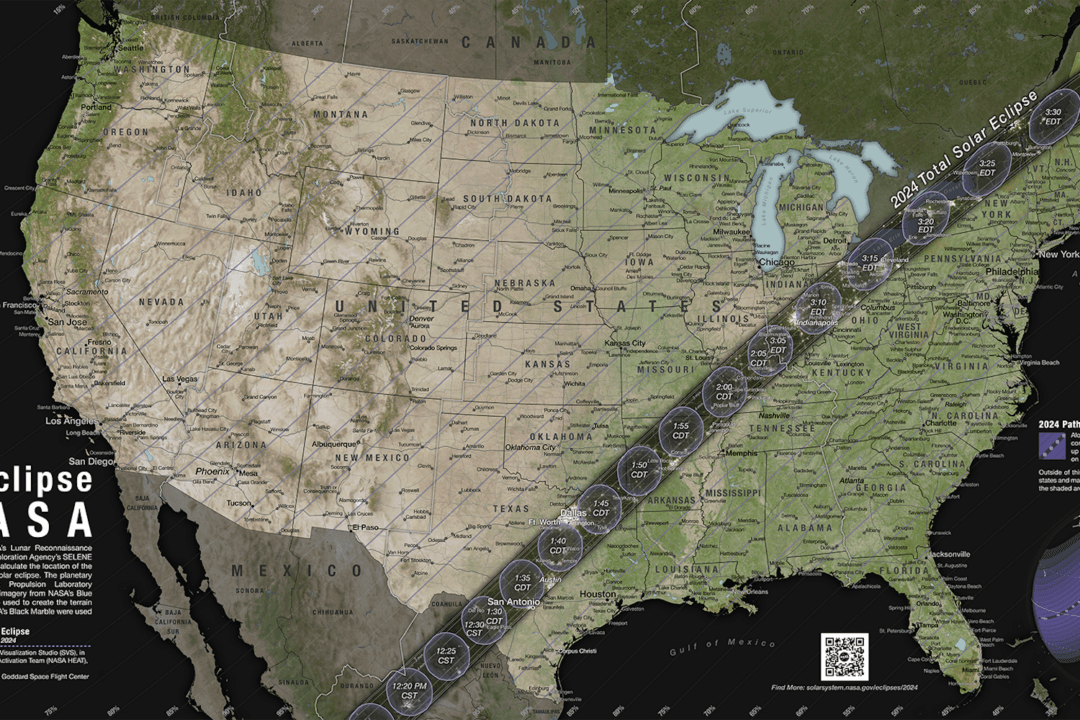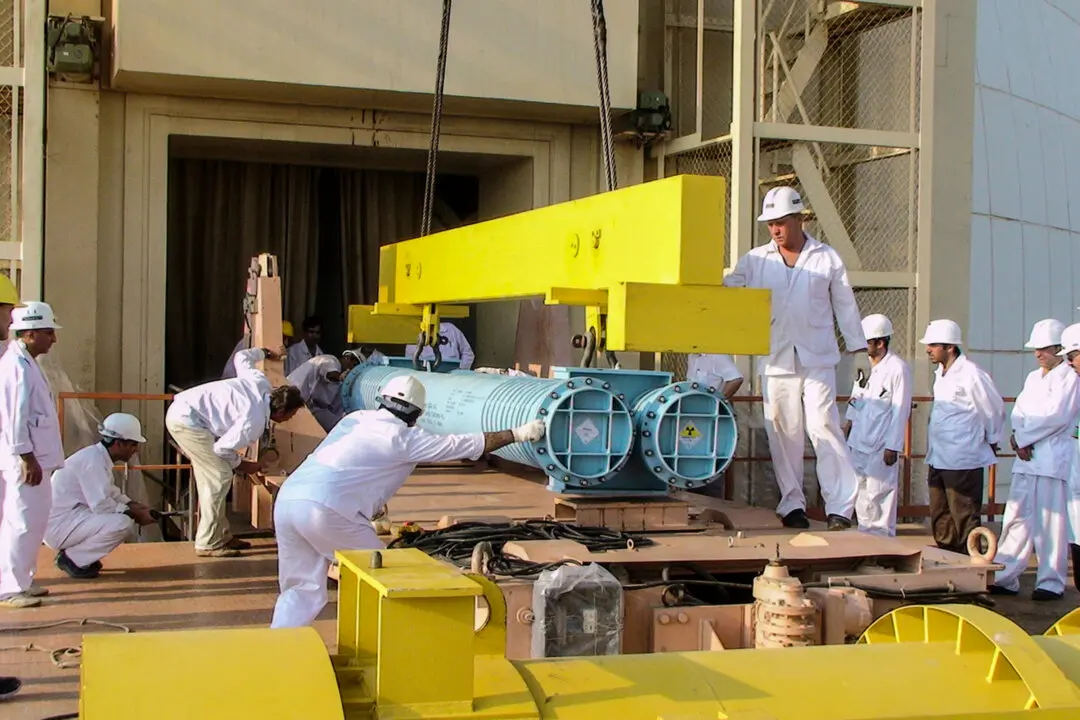The National Weather Service (NWS) issued a forecast for Monday’s solar eclipse, which is slated to pass across much of the United States. However, some key areas will be obscured by clouds or even face “severe” weather.
The agency’s Storm Prediction Center (SPC) has placed nearly the entire eclipse’s path of totality in Texas, Arkansas, and Oklahoma in a “severe” weather risk area for much of Monday. That includes cites such as Austin, San Antonio, and Waco.





